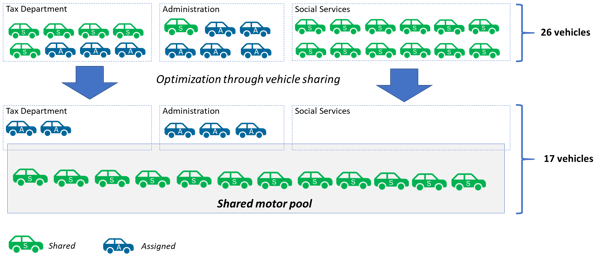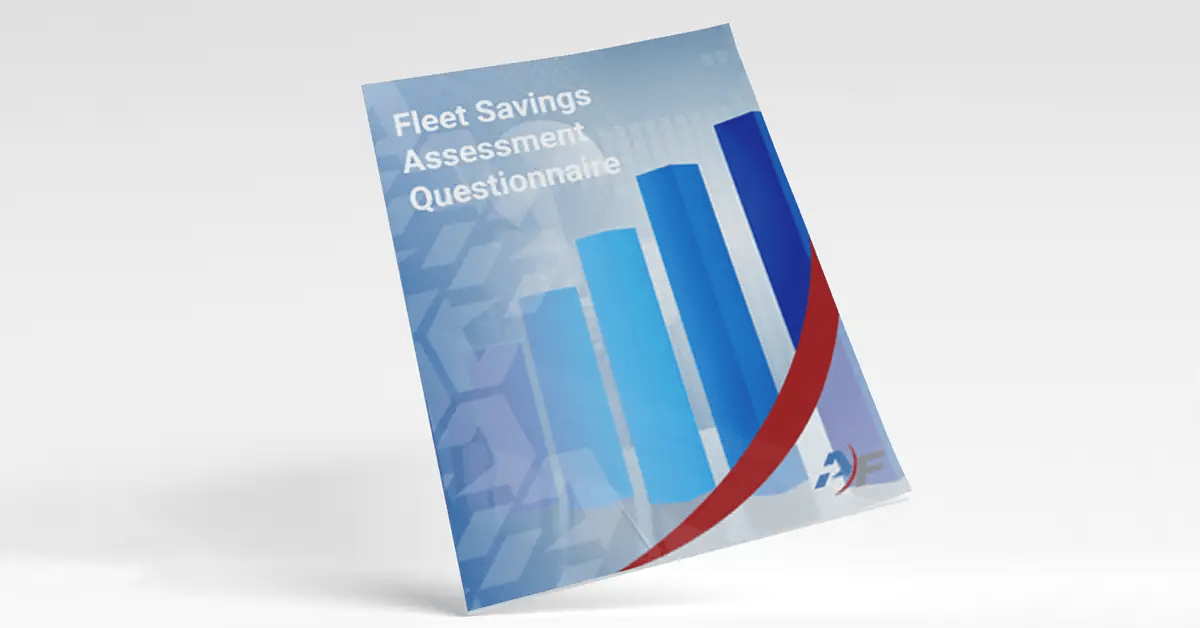Slash fleet expenses by sharing motorpool vehicles between departments
Does your organization have multiple small fleets that serve discrete groups of individuals? Our experience has shown that operating small, geographically co-located sub-fleets in most organizations can be one of the least efficient ways to operate a fleet. Why? Because you generally plan for worst-case scenarios when it comes to the size of a department fleet.
For example, if a university admissions department has peak demands that require eight passenger vehicles for a few months out of the year, that department would have a fleet of at least eight vehicles. At other times of the year, their peak demand may be closer to three vehicles. At the same time that the admissions department needs eight vehicles, another department sharing the same parking lot may have five idle vehicles. And yet another department may have three vehicles not in use. The peak and low demands for vehicles across departments most likely average out. By pooling, a much smaller number of vehicles is required to fulfill the mission for the organization as a whole.

Transitioning from a department-centric fleet to a fleet that shares vehicles generally results in significant decreases in the number of vehicles required to fulfill your mission. One reason why you might want one department to see another department’s motor pool is to promote sharing between the sites. For example, there could be an agreement between department motor pools that are located close to each other - within several miles. If one runs out of pool vehicles, they would have permission from the other sites to grab a vehicle. This increases the efficiency of the fleet.
To gain the greatest efficiencies, get co-located departments to combine their pools. One example is many departments located in the same building. They each have their own fleets and mini-pools. Typically, one department will run out of vehicles, but the other departments will not share their vehicles with other departments because of the “I paid for them and you can’t use them” mentality. But at some point, those other departments will be in the same situation: they’ll run out of vehicles, too.
When multiple departments combine their pools into a single one, they would most likely not run out of vehicles again. In fact, the number of vehicles in the combined pool would probably decrease significantly – we’ve seen over a 30% reduction in some client organizations. Every department would have access to more vehicles and, probably, more types of vehicles. Our estimates show that departments can save annually between $3,000 to as much as $8,000 per vehicle eliminated from the pool. Savings like that can add up fast.
Yes, there will always be reasons that users need assigned vehicles, but departments can save a significant amount of money by eliminating vehicles that are underutilized. We recommend collecting the data and evaluating the utilization of all vehicles to know for sure. Many drivers of assigned vehicles will give you every possible justification for why they need their assigned vehicle. However, once you are armed with utilization numbers you don't have to go with a gut feeling.
Our fleet experts can help you perform a return on investment analysis that considers the unique nuances of your fleet. If you are interested in a free fleet savings analysis of your fleet, request one below.








